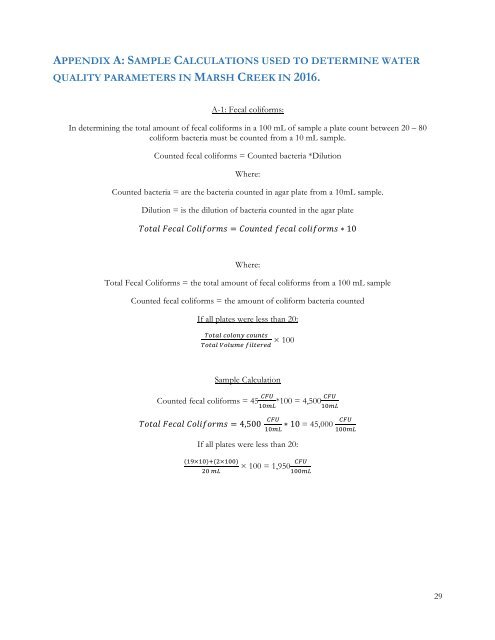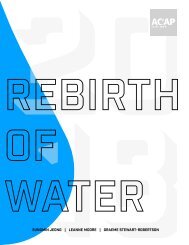Rebirth of Water Report 2016-2017
Marsh Creek, which is the largest watershed in greater Saint John, has been the recipient of centuries of untreated municipal wastewater deposition. Offensive odours, unsightly sanitary products and the threat posed by various human pathogens, resulting largely from the ~50 sewage outfalls in the lower reaches of Marsh Creek and the Saint John Harbour, have caused most residents to abandon the wellness of the watercourse. ACAP Saint John, a community-based ENGO and champion of the Harbour Cleanup project, has been conducting water quality monitoring and fish community surveys in the watershed since 1993 with the view towards someday restoring the ecological integrity of this forgotten natural asset.
Marsh Creek, which is the largest watershed in greater Saint John, has been the recipient of centuries of untreated municipal wastewater deposition. Offensive odours, unsightly sanitary products and the threat posed by various human pathogens, resulting largely from the ~50 sewage outfalls in the lower reaches of Marsh Creek and the Saint John Harbour, have caused most residents to abandon the wellness of the watercourse. ACAP Saint John, a community-based ENGO and champion of the Harbour Cleanup project, has been conducting water quality monitoring and fish community surveys in the watershed since 1993 with the view towards someday restoring the ecological integrity of this forgotten natural asset.
Create successful ePaper yourself
Turn your PDF publications into a flip-book with our unique Google optimized e-Paper software.
APPENDIX A: SAMPLE CALCULATIONS USED TO DETERMINE WATER<br />
QUALITY PARAMETERS IN MARSH CREEK IN <strong>2016</strong>.<br />
A-1: Fecal coliforms:<br />
In determining the total amount <strong>of</strong> fecal coliforms in a 100 mL <strong>of</strong> sample a plate count between 20 – 80<br />
coliform bacteria must be counted from a 10 mL sample.<br />
Counted fecal coliforms = Counted bacteria *Dilution<br />
Where:<br />
Counted bacteria = are the bacteria counted in agar plate from a 10mL sample.<br />
Dilution = is the dilution <strong>of</strong> bacteria counted in the agar plate<br />
Total Fecal Coliforms = Counted fecal coliforms ∗ 10<br />
Where:<br />
Total Fecal Coliforms = the total amount <strong>of</strong> fecal coliforms from a 100 mL sample<br />
Counted fecal coliforms = the amount <strong>of</strong> coliform bacteria counted<br />
If all plates were less than 20:<br />
789:;


















